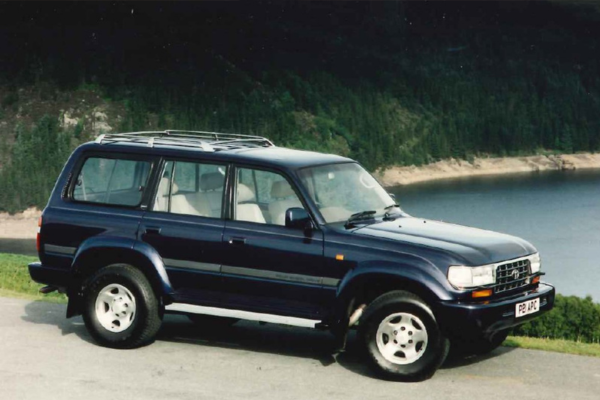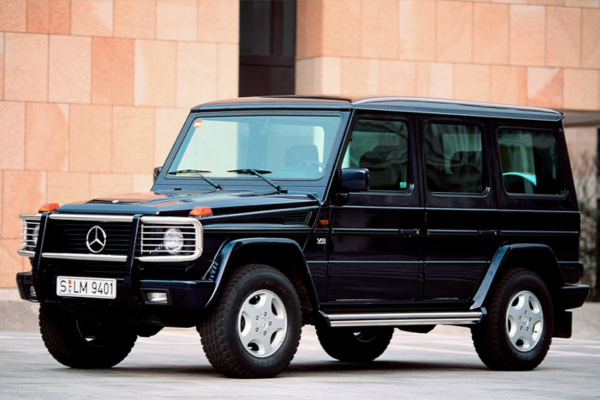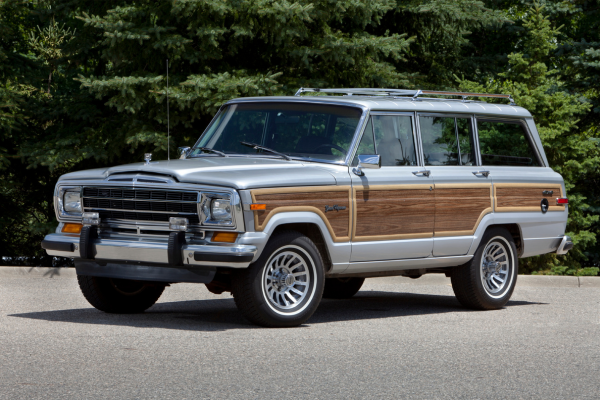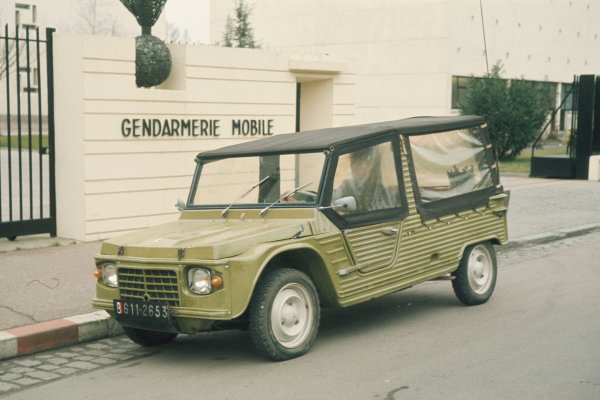The very best retro workhorses
Check out the prices of the most prized pick-ups and 4x4s in the US and you could be forgiven for thinking we’re talking about exotic sports cars. The very best classic utility vehicles in America routinely fetch more than $250,000 whether they’re superbly original or perfectly resto-modded. Over here, prices are a lot more attainable, which makes bagging a classic workhorse all the more appealing as you can run a classic while also using it as intended.
Land Rover
The first classic working car most drivers this side of the Atlantic think of is the Land Rover. It’s a brilliant starting point for any classic 4x4 owner as there are so many to choose from and they come in a huge range of styles. For some, the purity of the early cars will always make them the ones to have, but Land Rover built the Series I in small numbers up to 1957. However, it established the formula for all that followed up to the last original Defender rolled off the line in 2016.

A better bet for rugged classic car ownership are the later Series II, IIA and III models, which deliver all of the charm of the first model with some (small) added comforts. You have a choice of petrol or diesel engines, short or long wheelbases, and open, pick-up, estate and van bodies, which can all be changed to suit your needs. Looking after these Land Rovers is probably easier now than ever before thanks to superb parts back-up and a devout band of specialists that will help you travel as far and wide as you want to.
Toyota's Land Cruiser
The Austin Champ and Gypsy provided contemporary competition to the Land Rover, but it’s Toyota’s evergreen Land Cruiser that’s the real alternative here. Finding an early Land Cruiser on UK shores will be tough unless you import one from Japan or Australia and expect to pay a high price as they are much prized by collectors.

A more likely Land Cruiser discovery in the UK will be a 1984-onwards J70 model. It offers the chiseled good looks of the earlier cars with stronger engines, but it’s the J80 model from 1990 that is more in demand thanks to its greater availability and reputation for unstoppable reliability. It doesn’t really matter whether you pick the petrol or diesel versions as both are brilliant straight-six motors that will pull trailers, take you off-road, or toddle to the nearest cars and coffee meet in style.
Jeep CJ7 & Mercedes G-Wagen

Alternatives to these titans of the 4x4 workhorse classic world come in the shape of the Jeep CJ7, which is one of the definitive all-American cars, and the Mercedes G-Wagen. Either will carry you far into the wilds with ease and the G-Wagen has almost as many body style options as the Land Rover. Choose the Jeep and it’s a little more rudimentary to drive, but it’s also cheap to keep on the road and less expensive to buy than its Mercedes rival.
Jeep Grand Wagoneer

If this pair don’t quite cut it, you could go the whole hog with a Jeep Grand Wagoneer, which predates the Range Rover for packaging luxury car accoutrements in a 4x4 body. On the other hand, the Mercedes Unimog is as imposing as it gets without resorting to an HGV licence and these behemoth 4x4s are still on the go as working vehicles all around the world.
Mini Moke
Or, you might want a working classic you can fit in a normal garage, which brings us to the Mini Moke. It took the idea of a Mini to its logical, pared-to-the-bone conclusion and came up with an amazingly able off-road car. It was intended to be sold to the British Army, but they preferred their Land Rovers, so the
Moke turned into an offbeat icon of the 1960s and remains so today. Mini mechanical bits make a Moke easy to work on, repair, and tune, while the simple panels also make them relatively straightforward to fix and restore.

Fiat Panda 4x4
The same can be said of Fiat’s Panda 4x4, which was launched in 1983 with a 48bhp 965cc engine. Doesn’t sound like much, but then there wasn’t much of the Fiat for the engine to shift, so the Panda 4x4 was a deftly brilliant off-roader as it could trot over soft, rutted ground rather than trying to plough through it. Drive one now and you will wonder how it can be so good when it has such humble components.

Scamp RTV
An even more extreme take on the lightweight, all-terrain workhorse is the British-built Scamp RTV, which stood for Rought Terrain Vehicle. It came from the same company that made the Moke-alike Scamp based on the Mini and the RTV also borrowed its engine from the same source. However, the genius of the RTV was it turned the engine through 90-degrees so the driveshafts became propshafts to the front and rear axle. This also allowed the RTV to pivot in the middle, giving it virtually unrivalled articulation for off-road driving. Sadly, the RTV never sold in serious numbers despite it being used to set a blind driving record from John O’Groats to Lands End with Peter Wood at the wheel.
Volkswagen Type 181
Finding a Scamp RTV for sale and in working condition would be a feat in itself, but tracking down Volkswagen’s The Thing is an easier task. This is the name that has stuck with VW’s Type 181, which was sold as the Trekker in the UK. Most now over here are US imports thanks to the kinder climate on the West Coast of the US where most were sold. It was intended as a light vehicle for the German Army but the G-Wagen fulfilled that role better, so the Type 181 morphed into an oddball open-top based on the Beetle. Think of it as a more practical beach buggy and you’re on the money, and its removeable roof and doors make it as versatile and fun as the Citroen Mehari.
Citroen Mehari

The plastic-bodied Mehari used the 2CV chassis and engine in the same way the Moke lifted its engine and subframes from the Mini. Plenty of Meharis still whirr about the south of France doing what they were designed to, which just goes to show a classic workhorse will keep going no matter what.
Which one comes top for you? Let us know in the comments below.

COMMENT